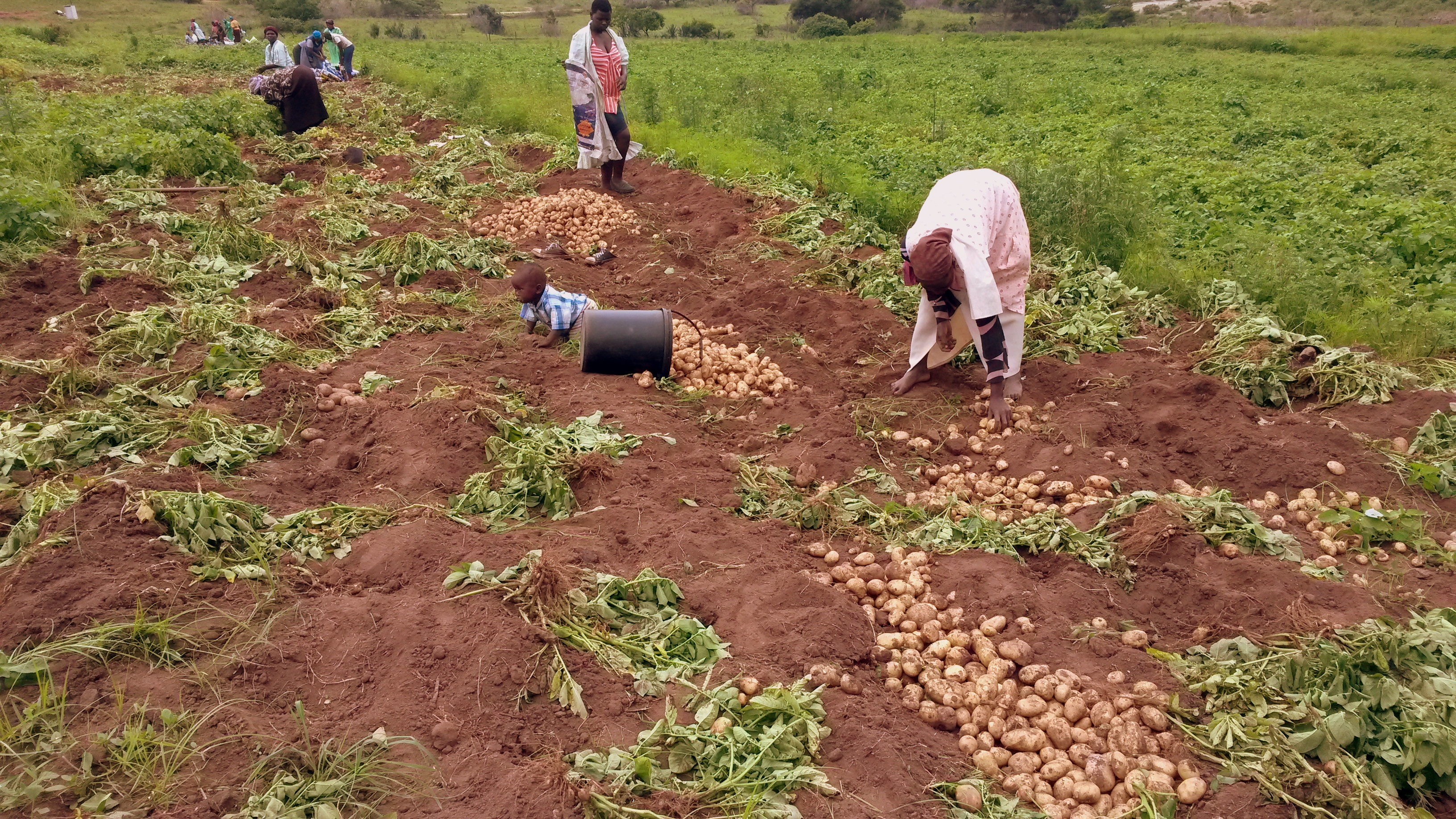Our Community Gardens grow throughout the year, but many of the vegetables that are being harvested now were planted in late winter. Springtime is especially important as it marks the onset of the wet season and extended daylight time. These combined factors give plants a jolt of life & energy, which expedites the growth process and spurs a larger harvest.
At the end of each growing season, gardeners handpick each crop. Currently, we’re harvesting over a tonne of potatoes, cabbage, onions, spinach, tomatoes, carrots and sugar snaps. When crops are reaped, new seedlings are planted immediately. In order to maintain the organic growing cycle, crops must be rotated to keep the soil up to a healthy standard. For example, once a cabbage crop is planted, farmers must plan to grow a crop (such as beans) that will restore nitrogen in the soil. It takes about three years for farmers to get their land to a place where it is producing a significant amount of vegetables so it’s crucial to understand successful crop maintenance and rotation.
Spring Harvest also marked the introduction of the Thanda Market System, which gives community members an opportunity to earn an income by providing them with an avenue to sell their vegetables. Previously, the cost of transporting vegetables to local markets far outweighed the monetary benefits thus causing the local agriculture industry to dwindle and farming practices to become lost over generations. However, the Thanda Market System buys excess produce direct from farmers and sells to public green grocers – eliminating the trouble of high transportation costs. Now, communities are seeing the earning potential in farming and are eager to expand their gardens.


